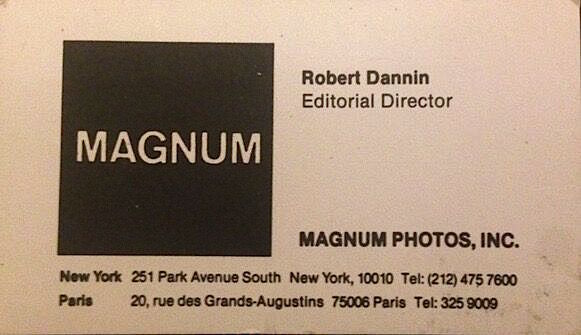 [Editor’s Note: Here we continue “The Dannin Papers,” a series of Guest Posts by Robert Dannin, who served as Editorial Director of Magnum Photos from 1985-90.
[Editor’s Note: Here we continue “The Dannin Papers,” a series of Guest Posts by Robert Dannin, who served as Editorial Director of Magnum Photos from 1985-90.
This second chapter — Dannin’s first-hand observations of the evolution and impact on the profession of the “A Day in the Life of …” book series (DITLO) as conceived and masterminded by Rick Smolan — appears in seven installments, of which this is the third. The fourth installment will follow shortly. Click here for Part 2; click here for Part 4. — A. D. C.]
•
The Assassination of Photography:
The Plot to Hack Reality (c)
by Robert Dannin
… Robert Pledge of Contact Press Images made innumerable appeals to his friends at Magnum, but was unable to convince anyone else to sign on for A Day in the Life of America. Pledge believes he can talk a snail out of its shell, so this resistance drove him crazy.
He wouldn’t quit. When Magnum members tired of his relentless campaigning and decided to call their non-participation a boycott he went into overdrive, hectoring me two or three times a day. To hear his pitch, you’d have thought he was promoting the International Workers of the World, and we were scabs to break ranks with the One Big Photography Family Reunion.
Pledge’s furious proselytizing suggested other motives, however. More than likely, Rick Smolan and David Cohen, heading up the project, had sold their corporate sponsors on the participation of famed Magnum photographers. Now, except for Elliott Erwitt, they couldn’t deliver the big names. (Steve McCurry, Eli Reed, and and Sebastião Salgado, all of whom had signed on, were still relatively unknown.)
 With reputations for producing classic American pictures and spectacular group projects, Magnum photographers like Eve Arnold, Dennis Stock, and Bruce Davidson would have conferred not only commercial legitimacy but, equally, the cachet of serious photography. In other words, A Day in the Life of America had made unwarranted representations to the same firms who regularly assigned Magnum photographers to shoot their annual reports at rates of at least $2500 per day.
With reputations for producing classic American pictures and spectacular group projects, Magnum photographers like Eve Arnold, Dennis Stock, and Bruce Davidson would have conferred not only commercial legitimacy but, equally, the cachet of serious photography. In other words, A Day in the Life of America had made unwarranted representations to the same firms who regularly assigned Magnum photographers to shoot their annual reports at rates of at least $2500 per day.
In this instance, Day in the Life of America was offering these same Magnum clients five years of open access to a custom image library, in exchange for in-kind services from hotels, air travel, rental cars, cameras, film, etc. Not a bad deal for the sponsors if the Magnum corporate-report crowd — Burt Glinn, Erich Hartmann, Philip Jones Griffiths, Paul Fusco, and a few others — accepted the token honoraria for their premium work.
 Yet, notwithstanding their love for group projects, Magnum photographers refused to be dragooned into an editorially questionable crowd-sourcing venture. Even today, nothing unites Magnum more than external forces trying to exploit their brand, emblematic of professional achievement as judged by peers.
Yet, notwithstanding their love for group projects, Magnum photographers refused to be dragooned into an editorially questionable crowd-sourcing venture. Even today, nothing unites Magnum more than external forces trying to exploit their brand, emblematic of professional achievement as judged by peers.
Their judgment was not just idle speculation. Proof of (mis)concept had materialized in print two years earlier. Smolan and Cohen had advertised Day in the Life of Hawaii with similar guarantees, emphasizing that it was “not just another book of pretty Hawaiian picture postcards … not a public-relations exercise or a tourist promotion.” They also promised the photographers total editorial control. (Click here for a pdf file of Smolan’s letter of invitation to prospective participants in this project.) Indeed, the results were not pretty and well below the standards of tourism photography.
As for editorial control, Salgado’s picture of a naked baby exemplified the clichés professionals strive to avoid at all costs.
•
With similar tasteless images and more gratuitous editing, A Day in the Life of America quickly metastasized from benign to malignant. One double-page layout suffices to illustrate the miscarriage of journalism characteristic of the entire Day in the Life enterprise. On pages 164-5 the reader sees a six-frame Americana pastiche centered on Gerrit Fokkema’s image of a Ku Klux Klan gathering in Georgia.
This staged picture is squeezed between Flip Schulke’s shot of an ethnic German band in New Ulm, MN and Gianni Giansanti’s photo of young ballerinas in Eugene, OR. The facing page includes, from to top to bottom: Dana Fineman’s portrait of wholesome square dancers in Reno, NV (better known for its legal houses of prostitution, a perennial subject for photographers), Gerd Ludwig’s photo of an African-American church choir (directly facing Fokkema’s Klansmen), and Luc Choquer’s assembly of professional cooks in New Orleans.
A mere sixty pages later, Fokkema’s KKK story resurfaces. From the same take we see a staged cross-burning, followed by a portrait of a middle-aged Klanswoman kissing her infant grandchild (pages 224/5). This positioning exemplified the twisted principles underlying the project. Let the photographers shoot (or let the editors produce) anything possible, but suppress all critical regard. The images depicting Reagan’s white-supremacist base were mashed together with the ballerinas, churchgoers, square-dancers, kitchen workers, and musicians to produce an incomprehensible mélange that reduces the KKK to an instance of pure kitsch.
Because they are subordinated to an event residing outside the framework of serious journalism, the images not only fail to inform but lend themselves to improbable juxtapositions and false social equivalencies of the sort recently promulgated by Donald Trump in his assertion that there “were some very fine people” among the Klan members and neo-Nazis in Charlottesville, VA on August 12, 2017.[1] Lacking spontaneity, decontextualized, and bordering on puffery, the artless Day in the Life of America remains arguably the most embarrassing collection of images in the annals of photography.
•
Bad coffee table books come and go, yet thanks to its powerful sponsors this mutation was shoved onto the mass-media stage. The assassins, Cohen and Smolan, appeared on television chat shows (NBC’s Today, for example), proposing to reintroduce photography to an audience susceptible to historical distortion. No mention was made of the decisive role played by photographers during the civil rights movement, or the important counterbalance offered by their pictures to negative depictions of the Sixties counterculture and antiwar movements.
In the light of today’s nonstop coverage devoted to Donald Trump’s outrageous behavior, we tend to forget the Reagan administration’s bare-knuckled propaganda operations on behalf of its low-intensity military campaigns against helpless nations, the manipulation of images during its murderous subjugation of Grenada, and the anticommunist delirium of a clinically demented president marshalled to proclaim a “cure” for the so-called Vietnam Syndrome, an affliction characterized by the popular rejection of imperialist warfare.
Photographers? They were happy campers hoping to frame the sunrise while “morning in America” dawned over a landscape of poisoned rivers and carcinogenic soils.
•
For its time, A Day in the Life of America was a classic bait-and-switch maneuver, directing the public gaze toward nonsense images while the Reagan administration savagely attacked ordinary working people. Photographers boarded that train too, and were invited to ignore the assault on a disempowered electorate by politicians who blamed air pollution on trees; social policies vilifying immigrants, minorities and the poor; “broken windows” policing and mass incarceration; the overturning of reproductive rights; and total war against organized labor. In this latter instance, the photographers themselves were targets, because in signing the DITLO contract they surrendered decades of hard-won ownership of copyrights and subsidiary-rights licensing options to the corporate diktat.
Perhaps the most astounding role in this Waterloo of photography was played by the agents, who collaborated in a two-pronged attack: on artistic and journalistic standards, on the one hand, and against fees and rights on the other. Theoretically, agencies are supposed to defend their photographers, who are collectively shackled by an unjust legal precedent that outlaws collective bargaining. This particular misfortune resulted from years of successful lobbying by magazine publishers that persuaded judges to view voluntary photographers’ associations as trusts seeking to restrain their trade. Imagine the legal acrobatics necessary to lump photographers in the same bag as the 19th-century robber barons! (The American Society of Magazine Photographers, ASMP, now renamed the American Society of Media Photographers, went right along with it, and still does.)
 In this case, the picture agencies Sygma, Contact, and Black Star were not only abdicating their responsibility to protect photographers but actively collaborating with a scheme to keep photographers on the bottom. What worked as an ideological exercise to avoid newsworthy reality functioned simultaneously to screw professionals out of a decent livelihood. Small wonder that Murdoch’s News Corp International became interested in purchasing Day in the Life publisher Collins, the ultimate source of this formula so close to News Corp’s own reactionary, union-busting journalism.
In this case, the picture agencies Sygma, Contact, and Black Star were not only abdicating their responsibility to protect photographers but actively collaborating with a scheme to keep photographers on the bottom. What worked as an ideological exercise to avoid newsworthy reality functioned simultaneously to screw professionals out of a decent livelihood. Small wonder that Murdoch’s News Corp International became interested in purchasing Day in the Life publisher Collins, the ultimate source of this formula so close to News Corp’s own reactionary, union-busting journalism.
•
In retrospect, the whole enterprise appears like a rehearsal for the Fox infotainment broadcast model: a fusion of corporate sponsorship, soft news, cross-platform tie-ins, and party favors. The bottom line was determined by the sponsors’ positive reaction to the project’s concrete deliverables: open access to nearly all pictures generated.
 If the publishing industry envisioned this as a profitable series on the bookstore shelves, the sponsoring corporations saw it as an unlimited resource, to be mined for their many advertising and promotional needs. It made sense to continue building this archive by expanding the project to places with mass-market potential — Europe certainly, but also Russia and China, where government wariness of foreign broadcast media could be mitigated by a relatively harmless book. By including a handful of local photographers and scheduling foreign-language editions, Day in the Life represented a model for American companies to use in order to make landfall where previously they were unable to venture. …
If the publishing industry envisioned this as a profitable series on the bookstore shelves, the sponsoring corporations saw it as an unlimited resource, to be mined for their many advertising and promotional needs. It made sense to continue building this archive by expanding the project to places with mass-market potential — Europe certainly, but also Russia and China, where government wariness of foreign broadcast media could be mitigated by a relatively harmless book. By including a handful of local photographers and scheduling foreign-language editions, Day in the Life represented a model for American companies to use in order to make landfall where previously they were unable to venture. …
•
[1] “Mainstreaming hate by casting it in a softer light” is how Michael Shaw, the publisher and founder of Reading the Pictures, a site that analyzes news photos and media images, characterizes the depiction of neo-Nazis and Klan members as just ordinary folks (Lois Beckett, “The year in Nazi propaganda: images of white supremacy in Trump’s America,” Guardian, 27 December 27, 2017).
(Part 1 I 2 I 3 I 4 I 5 I 6 I 7)
•
Text copyright © 2018 by Robert Dannin. All rights reserved.
•
(For an index of links to all posts in this series, click here.)
•
Robert Dannin holds a doctorate in linguistics and anthropology from the School for Advanced Studies in the Social Sciences in Paris. He taught at Brown University, New York University, and Suffolk University in Boston. He is co-founder and director of the Ddora Foundation, and serves as a trustee at Mount Ida College in Newton, Mass. Among his scholarly publications, Black Pilgrimage to Islam (Oxford University Press, 2002) was the first ethnography of Islamic religious conversion in America.
In 2009 Dannin was awarded an inaugural residency at the Norman Mailer Writer’s Colony. His most recent work is a biography of Jacob Schiff, the Gilded Age banker and rival to J. P. Morgan.
Dannin paid for his education by working as a cook, translator, ghostwriter, and copywriter/photo editor at Sipa Press in Paris from 1978 to 1981. He was news editor for Sygma New York and later the editorial director of Magnum, where he produced Sebastião Salgado Jr.’s “An Archaeology of the Industrial Age,” eventually published as Workers (Aperture). His other editorial credits include James Nachtwey’s Inferno (Phaidon) and the survey Arms Against Fury: Magnum Photographers in Afghanistan (powerHouse).
Dannin is the author of numerous critical essays about photojournalism. From 1995 to 1997 he served as special consultant on photography to the office of the New York Attorney General. To contact Robert Dannin, click here.



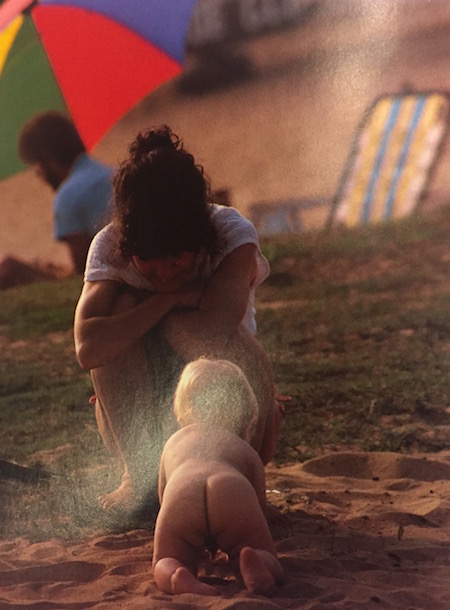
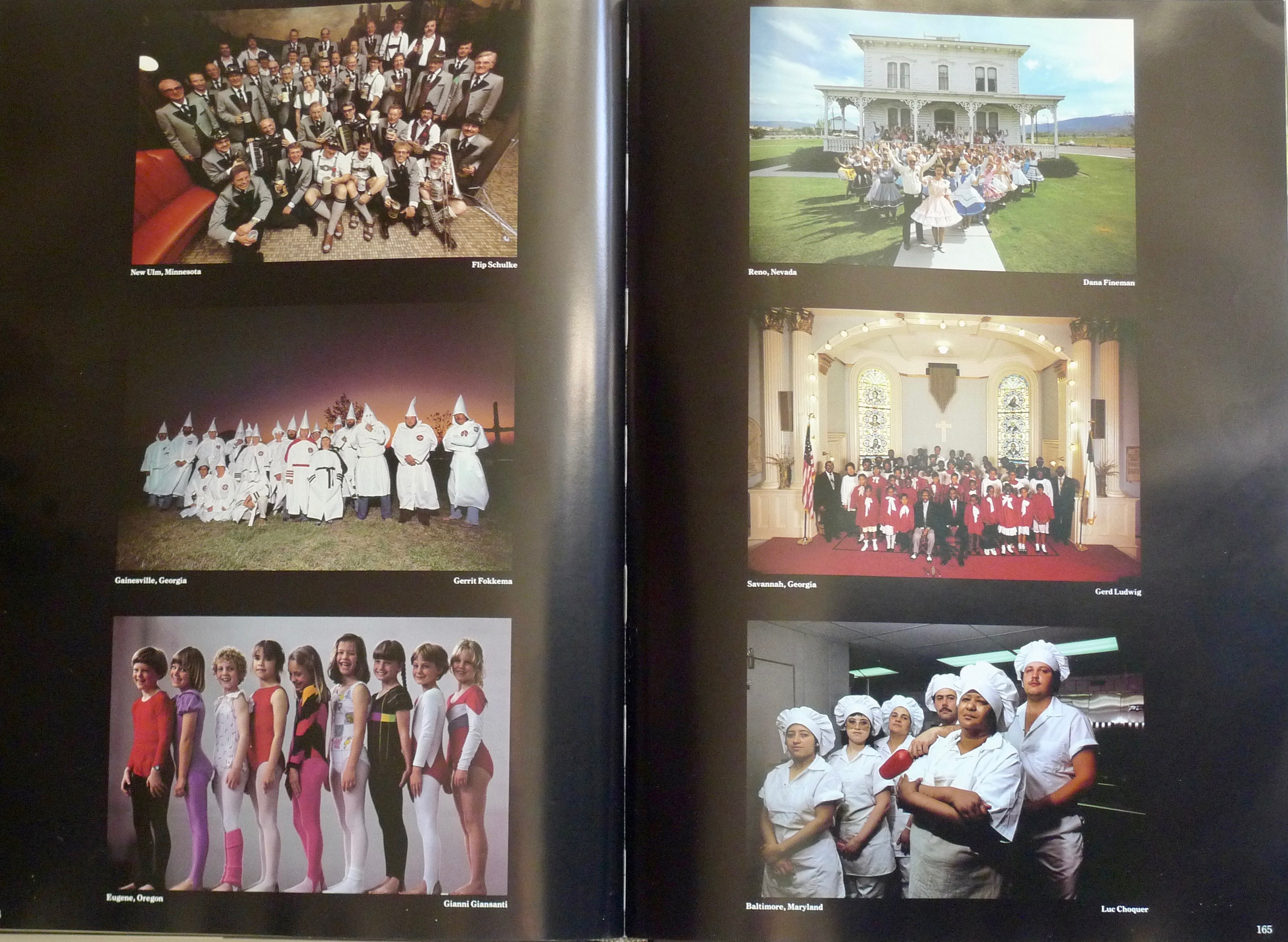
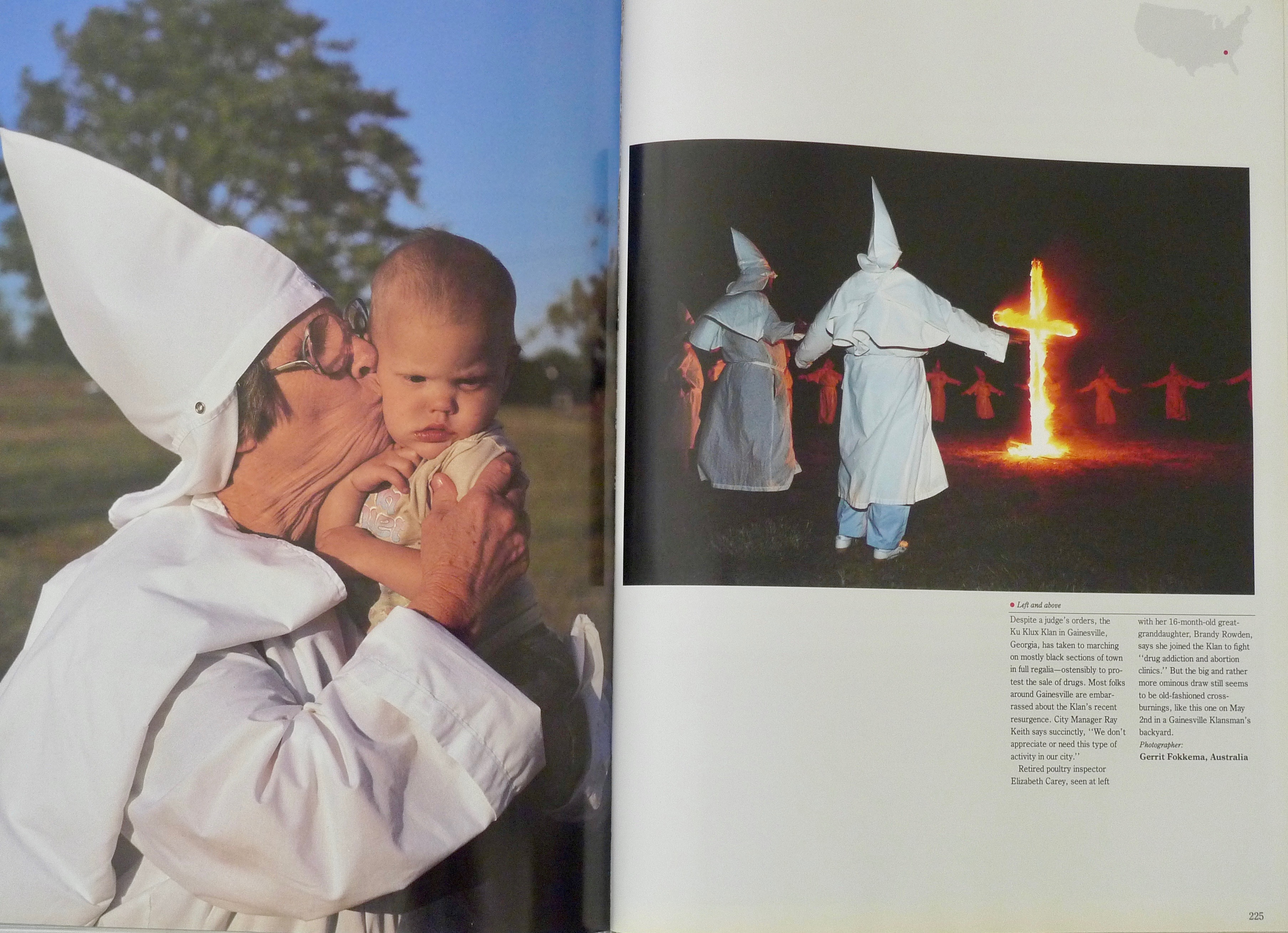

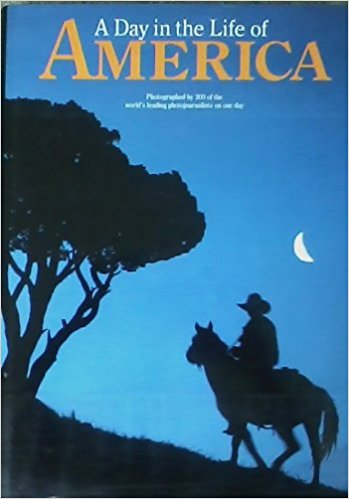






I’ll just be blunt here…Dannin’s broad-brushstroke bashing of the many fine images published in the DITLA project smacks of a jealous rant.
Why is it many photo critics often lack the talent or stamina to walk the walk and feel the need to diminish the work of those down in the trenches producing the content? Surely, even through his lens, there must have been a few relevant images published in the volume. I would love to see and compare his images from such a project with any of those who participated.
More basic: Dannin seems to lack the perception to recognize the brilliance of the Day in the Life brand invention. Publishing this story of America at the time resulted in a wildly popular and original book. Photojournalists recognized this project as a collective storytelling opportunity that transcended a few “day rates.” This critique is, like, so overthought.
As editor and publisher of Dannin’s commentary on the DITLO projects, I should point out that, as clearly indicated in the editor’s note preceding each of his Guest Posts and the bio note at the end thereof, Robert Dannin served in various executive capacities at the picture agencies SIPA, Sygma, and Magnum. Consequently, his perspective on the DITLO series is that of an agent representing the short- and long-term interests of working photographers, not that of a picture-maker. His chosen medium of expression is the written word, not the photograph. Thus your charge of “jealousy” as his motive for this critique, and your demand that he validate his analysis by showing you his photos, immediately proves itself both careless and silly.
Nor is Dannin a “photo critic,” in the sense that we usually use that term nowadays. He’s a photo-industry insider with significant credentials as such, whose perspective merits serious consideration, in my opinion.
Your general charge that “many photo critics … lack the talent or stamina to walk the walk and feel the need to diminish the work of those down in the trenches producing the content” has the same logic as an accusation that umpires lack the talent and stamina to play nine innings of baseball. Worth pointing out that in no other medium — film, theater, dance, music, literature — do performers regularly complain that the critics are not performers themselves. That whine remains unique to photographers (a considerable number of them, at least), showing how far this medium still has to go to reach maturity.